
Search Wild Foods Home Garden & Nature's Restaurant Websites:
Jerusalem Artichoke or Sunchoke
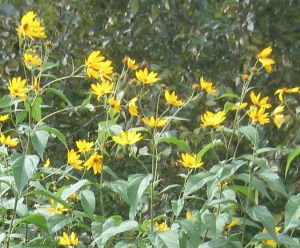
(NOTE: If you are not interested in growing Jerusalem Artichokes, but just finding and using them, try going to the Nature's Restaurant Online site for the Jerusalem Artichoke.)
The Jerusalem Artichoke or Sunchoke (Helianthus tuberosus). Also has the names, Sunroot, Topinambour and Earth Apple. It is a great overall food with one potential warning. As it is a plant that stores its energy as inulin instead of starch, for a few people it can cause gas and stomach pains from the gas. Nothing dangerous, but like any new food, start with small amounts and see how well you tolerate it. Inulin (no, not insulin) is good for people with blood sugar issues, and has many other health benefits such as helping your body absorb calcium. They seem to be almost everywhere in Eastern North America, and farmers consider them to be a very troublesome weed, although it is cultivated as a crop for the tubers in some areas. They seem to have no diseases or pest issues, at least I've never seen them bothered by anything. If you have a garden where you want a 2-3.5 meter (6-12 feet) tall, late season flowering sunflower, that has no pests and spreads on its own, and produces edible tubers in the fall, this is your plant.
Is the growing of this plant compatible with Natural farming, Ecoagriculture or Eco friendly agriculture, Ecological farming, Sustainable agriculture, Agroforestry or Agro-sylviculture and Permaculture: These can be grown using the Natural farming, no-till garden method, but the tubers will get smaller each year. This plant will produce the best quality and biggest tubers if the soil is turned. See under "Maintenance" for more.
Soil & Site: Like most plants grown for the roots or tubers, they need loose, loamy soil. They will grow in soils that are slightly acidic to alkaline, though they do better in neutral to alkaline. A full sun site is required. I've tried growing them where there is partial shade, but the tubers are small. The soil should be moist, but never wet or standing water.
Planting: All you do is find some in the fall after the flowers have died, dig up the tubers, and plant them where you want them to come up next year, about 10-15 cm (4-6 inches) below the surface of the ground. Put down about a 2.5-5 cm (1-2 inches) deep layer of mulch. If you can't find any in the wild, find a grocery store or Asian food store that sells them, find a few healthy ones, and plant where you want them. For the best results make sure that each one you plant has at least two sprouts on the tuber - the little bumps. According to commercial growers, the ideal size to plant is 2 oz tubers. They will always come up where they have been planted, as you cannot find every little tuber. So make sure where you plant them, you don't mind that they are there forever unless you take drastic, chemical actions.
Maintenance: If you just leave them year after year, they will produce. However, they will get smaller each year this way. If you want big ones, you have to dig some tubers up and replant in freshly turned over, loose soil that is rich in nutrients. When you have harvested the crop, put composted manure on top and turn under. You can use a tiller, or just turn over with a shovel. The tiller won't hurt the little tubers. When done turning over the soil, any you see on the surface, just push under the soil and cover. After that, put down a layer of mulch. They will return the next spring unless you went through every scrap of soil with a screen.
Also, they will spread. That isn't good sometimes, but it can be great if that's what you want. I find the easiest way to keep it under control is to grow it in a raised bed garden or in a garden in the middle of a lawn. Mowing around the garden keeps it from getting away from you - it will try popping up in the lawn around the garden, but mowing regularly keeps it from taking over because it cannot produce tubers where it is regularly mowed. I don't know if it can spread by seed, but in my experience, it only spreads from tubers.
Harvesting: Gather in the fall after the flower dies. If you have the right soil, you can just grab the base of the stalk, pull it up, then turn over the soil where the stalk was, and search through the soil. Leave the tiny ones in the soil. I have been told you can harvest them up in the spring before the plant sprouts, but I can't confirm that – I've never done it.
Using: Use them quickly after harvesting. Sadly, they don't seem to store very well compared to Potatoes. They will last a week, maybe two, in the fridge in the vegetable drawer. I think that must be the reason they are not more popular as a vegetable. You can cook them, then freeze them. It works well, and if you already have a freezer, and have a good crop, it may be worth the effort to you. Any cooked way will work, but the most efficient I have found is to wash them, put them in a steamer and steam until you can easily pass a fork through them, cool, bag in freezer baggies and put in freezer. Don't bother trying to peel the skin, just make sure they are well washed and use. They are nice raw, crunchy and a bit nutty tasting with no negative aspect at all. You can slice them up thinly and put on a salad, boil them and mash them and use like potatoes. If fact, the best advice I can give, is just use them as if they were potatoes when cooking. They can even be made into fries, but they do have a tenancy to fall apart in the oil a bit in my experience. My preferred way is to steam them until soft and serve as a side dish with a little Olive oil, salt and Lemon juice. If you make them mashed, don't add any liquid (often Milk with mashed potatoes), as they are not as "dry" as boiled potatoes.
Description:
- USDA Plant Hardiness Zone: 3-9 (More information on hardiness zones).
- Soil pH: 6.5-7.5
- Plant Size: 2-3.5 meter (6 to 12 feet)
- Duration: Perennial
- Leaf Shape: Ovate, coming to a pointed tip. Upper leaves are more narrow compared to their length.
- Leaf Phyllotaxis (Arrangement) on branch: On upper part of plant leaves are Opposite, on lower part of plant they are Alternate.
- Leaf Size: Up to 30 cm (12 inches) long - usually smaller. Largest leaves near bottom of stem, getting smaller toward the top of the plant.
- Leaf Margin: Unevenly serrated, and often wavy.
- Leaf Notes: rough, hairy feel
- Flowers: Yellow, look like small Sunflowers. 5–10 centimetres (2 to 4 inches) in diameter. 10–20 ray florets
- Tuber: 5–10 centimetres (2 to 4 inches) long. Wild (uncultivated) ones are much smaller than cultivated ones. Where I live, most of them have a tan color skin that makes them look like a bumpy Ginger root. The skin on the tuber can be purple, white, red, or light brown. All the ones I have gathered have been almost white to very light yellowish flesh on the inside.
- Habitat: Full sun to part shade. Likes the land disturbed. Slightly acidic to slightly alkaline soils.
Web Resources:
- Recipe search on the web here (Google search) and here (Bing search).
- Pictures on the web here (Google images) and here (Bing images).
- Interactive USDA distribution map and plant profile here.
- The Biota of North America Program (BONAP) distribution map here. BONAP map color key here.
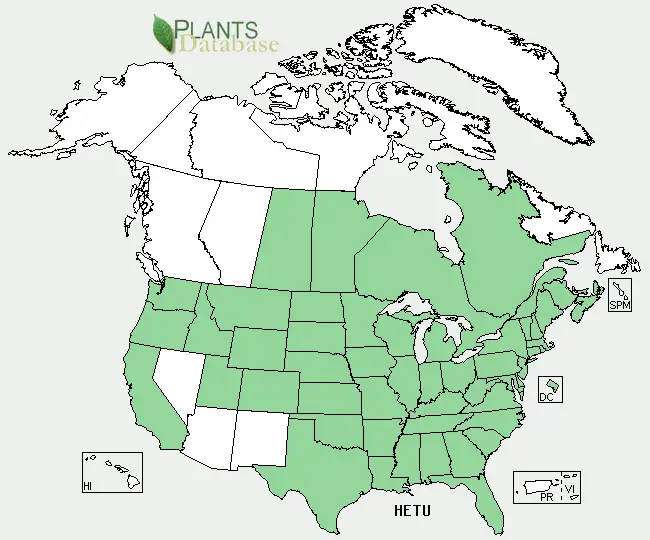
Jerusalem Artichoke or Sunchoke (Helianthus tuberosus) range. Distribution map courtesy of U. S. Department of Agriculture (USDA Natural Resources Service) and used in accordance with their policies.
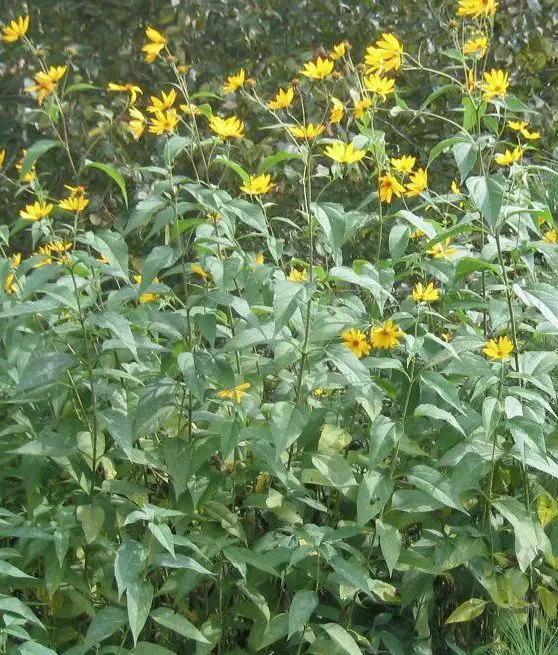
A group of Jerusalem Artichokes. This picture was taken in late summer. Once the yellow flower dies, the tubers are ready to harvest. Notice the shape of the leaves, as other similar plants have very different leaves. These are about 2 meters (6 to 7 feet) tall.
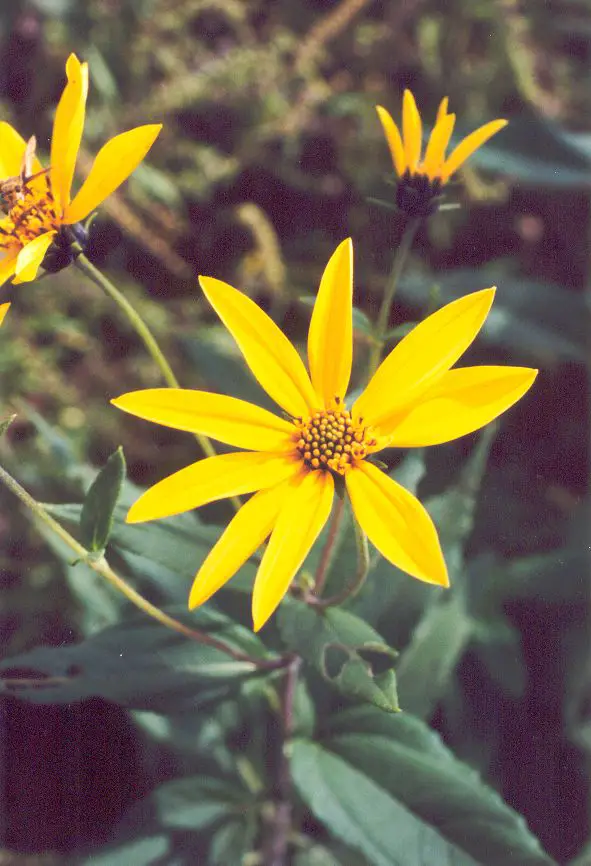
Jerusalem Artichoke flower. (Jennifer Anderson, hosted by the USDA-NRCS PLANTS Database)
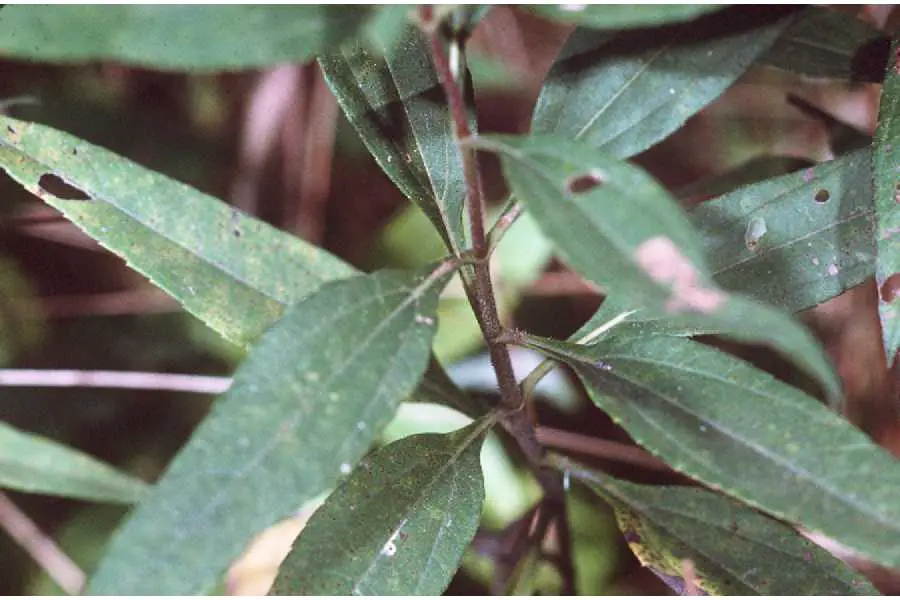
Jerusalem Artichoke leaves and how they attach to stalk. (Robert H. Mohlenbrock, hosted by the USDA-NRCS PLANTS Database / USDA SCS. 1991. Southern wetland flora: Field office guide to plant species. South National Technical Center, Fort Worth)
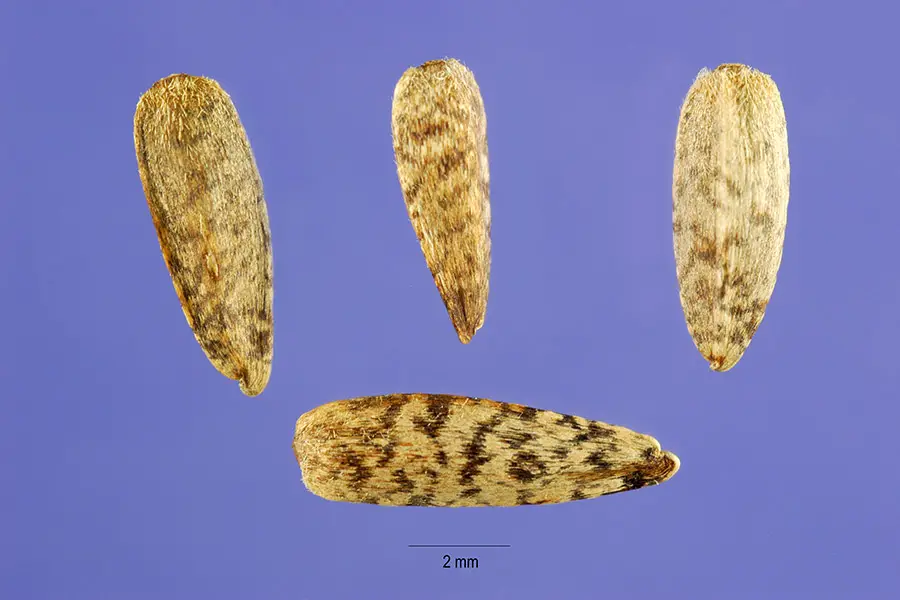
Jerusalem Artichoke seeds. (Steve Hurst, hosted by the USDA-NRCS PLANTS Database)
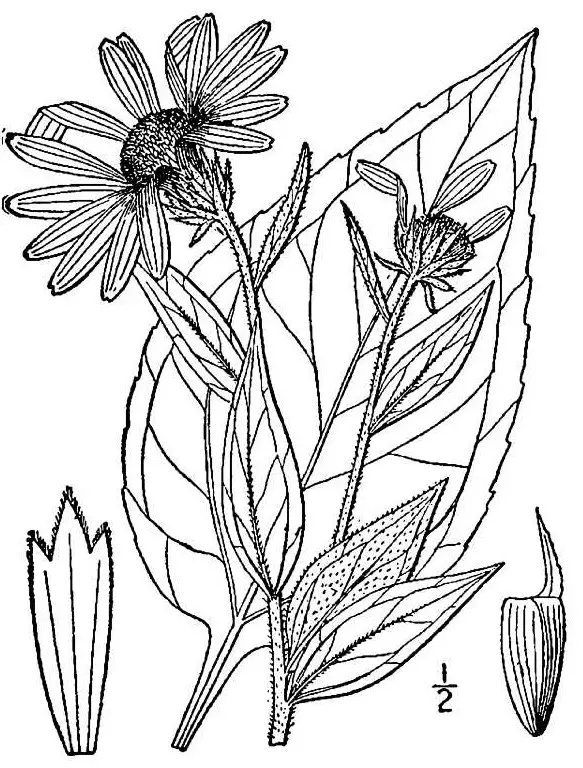
Jerusalem Artichoke drawing. (USDA-NRCS PLANTS Database / Britton, N.L., and A. Brown. 1913. An illustrated flora of the northern United States, Canada and the British Possessions. 3 vols. Charles Scribner's Sons, New York. Vol. 3: 486.)
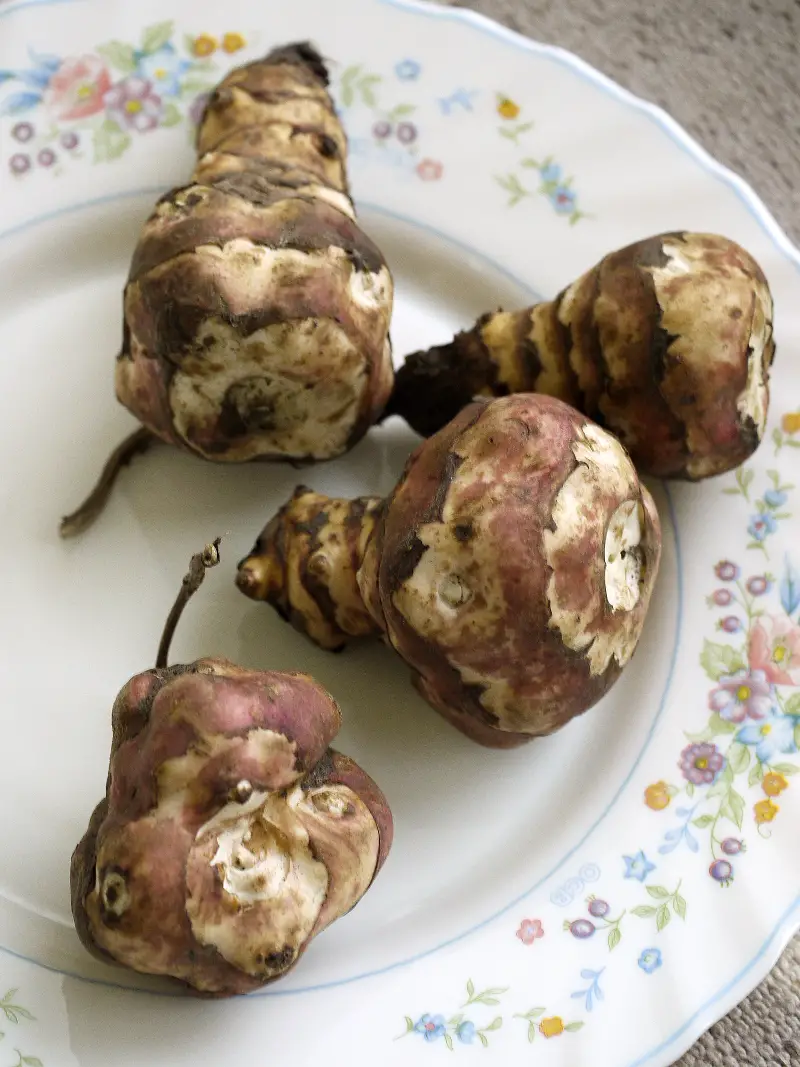
The Harvest: Jerusalem Artichoke tubers
Search Wild Foods Home Garden & Nature's Restaurant Websites:
Share:
Why does this site have ads?
Originally the content in this site was a book that was sold through Amazon worldwide. However, I wanted the information to available to everyone free of charge, so I made this website. The ads on the site help cover the cost of maintaining the site and keeping it available.
Google + profile
